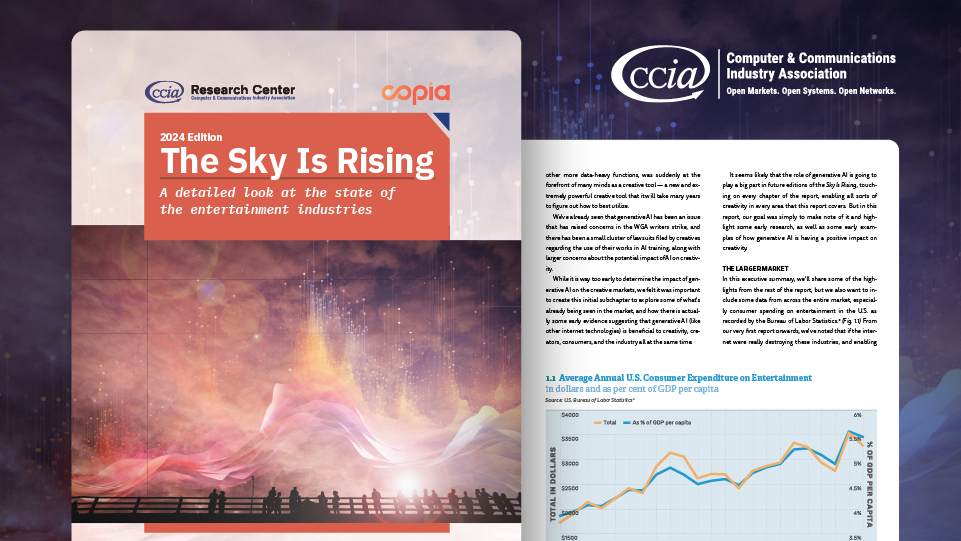The Changing Textbook Industry
The Internet is transforming the $14 billion U.S. textbook industry. Although this market represents only 1% of overall education spending, the changes brought by the Internet could result in significant improvements in the quality of education as well as cost savings. Legislation introduced on November 14, 2013 by Senators Durbin and Franken would accelerate this process.
The textbook industry is divided into two sectors of roughly equal size: K-12 and higher education. Three publishers, Pearson, Houghton Mifflin Harcourt, and McGraw-Hill Education, control the majority of the K-12 market. Pearson, McGraw-Hill Education, Cengage, and Wiley dominate the higher education market.
According to the Bureau of Labor Statistics, the price of textbooks has risen more than 800% over the past 30 years, a rate faster than medical services (575%), new home prices (325%), and the consumer price index (250%). The average college student spends more than $900 a year on textbooks. Not surprisingly, textbook publishers have been highly profitable. In 2012, McGraw-Hill’s profit margin was 25%; Wiley’s was 15%; and Pearson’s was 10%. Moreover, the profit margin of firms in the publishing sector increased on average by 2.5% between 2003 and 2012.
The Internet, however, has begun to disrupt this market. First, the Internet has facilitated the purchase and rental of used textbooks. Although publishers have long had to compete with the sale of used textbooks at on-campus bookstores, online platforms such as Amazon and Half.com (owned by eBay) enable the selling of books between students at different institutions. This is particularly helpful when one institution has adopted a new edition of a textbook, while another institution is still using an older edition.
Moreover, the Internet has facilitated the renting of textbooks. Companies such as Chegg and Amazon allow the rental of textbooks for periods between 30 and 180 days, at a discount from the purchase price. While the publisher collects revenue from the first sale of the book, the subsequent rentals could deprive the publisher of additional sales of new copies.
This use of the scale of the Internet to achieve a more efficient allocation of surplus resources is similar to other online services, such as Airbnb, eBay, and RelayRides.
Second, the Internet has created a demand for digital textbooks, which has reduced the revenue of the established publishers. In the higher education market — primarily a B2C market where textbooks are sold to individual students — the price a publisher can command for a digital version of a textbook is lower than that of a physical copy. In the K-12 market — primarily a B2B market where textbooks are sold to school districts — publishers typically charge a school district an annual subscription fee for an e-textbook, which defers income. For example, a publisher could sell a physical textbook for $75, but could only charge $12.50 for an annual subscription fee for the ebook version of that textbook. While over six years the revenue stream would total $75, in the first year the publisher’s revenue is down $62.50.
Third, and most importantly, the Internet has allowed the emergence of new competitors to the entrenched textbook publishers. These competitors take many different approaches. Some are for-profit businesses. Boundless provides low cost alternatives to standard college textbooks. While the average price of an assigned textbook is $175, Boundless sells an online textbook covering the same subject matter for $20. The search feature of the Boundless textbook allows the student to find the information that matches the content of the textbook pages assigned by the professor. Flat World Knowledge offers over 100 online textbooks, which professors can customize for their courses. Students purchase an individual textbook for $20, or a “Study Pass” to the entire catalogue for a higher flat fee. Bookboon employs an advertising model to make 1000 textbooks available for free download.
Probably even more transformational is the Open Educational Resources (OERs) approach. OERs are released under an open license that permits their free use and repurposing. OERs include open textbooks as well as other materials that support access to knowledge such as lesson plans, full courses, and tests. OERs usually are funded by government agencies or foundations such as the Bill & Melinda Gates Foundation and the William & Flora Hewlett Foundation. In 2009, for instance, Congress included in the American Recovery and Reinvestment Act $2 billion for grants for community colleges to develop educational and career training materials that would be released under a Creative Commons CC-BY license.
The impetus for the development of open textbooks is the belief that they are less expensive for students (in higher education) and school districts (in K-12) than textbooks developed by commercial publishers. Moreover, open textbooks can easily be customized and updated by instructors, enabling them to provide a better learning experience for their students.
One of the leading providers of open textbooks in higher education is OpenStax College, operated by Rice University and funded by numerous foundations. OpenStax provides free access to peer-reviewed textbooks, which professors can customize for their courses.
In 2012, California Governor Jerry Brown signed legislation that would fund the creation by California universities of 50 open textbooks targeted to lower-division courses. A California Digital Open Source Library would be created to host the textbooks, and the California Open Education Resources Council would oversee the book approval process. Student will be able to download the books for free, or purchase physical copies for $20.
California has also launched an open textbook program for K-12 students, with the objective of ultimately eliminating the state’s $400 million annual textbook budget. Utah, Florida, Maine and Washington State have begun similar initiatives. Utah is focusing on textbooks in math, language arts and science. The books will be available for free online and for $5 for a physical copy. The Utah Office of Education decided to create open textbooks for use statewide following a two-year pilot program conducted by the Brigham Young University-Public School Partnership and funded by the William and Flora Hewlett Foundation. The textbooks used during the pilot program were based on OER materials developed by the non-profit CK-12 Foundation.
The movement towards open online education also presents potential competition for commercial publishers. Massive Open Online Courses (MOOCs) offered by platforms such as Coursera or edX typically provide the students with all course materials, thereby displacing textbooks. Even if MOOCs do not revolutionize higher education to the extent suggested by their proponents, open course materials created to support MOOCs nonetheless could supplant textbooks.
The Affordable College Textbook Act, introduced by Senators Durbin and Franken on November 14, 2013, would accelerate the development and adoption of open textbooks. The legislation would authorize the Secretary of Education to make grants to institutions of higher education “to support pilot programs that expand the use of open textbooks in order to achieve savings for students.” The bill sets forth several findings, including that “Federal investment in expanding the use of open educational resources could significantly lower college textbook costs and reduce financial barriers to higher education, while making efficient use of taxpayer funds.”
The publishers might complain that government funding for the creation of open textbooks constitutes interference in the free market. This argument overlooks the fact that the government is the buyer in the textbook market. In K-12, school districts — government entities — purchase the textbooks directly. In higher education, government subsidizes the purchase of textbooks through support for financial aid. Because the government already is the buyer, it is completely consistent with free market principles for the government to seek the best product at the lowest cost.
The textbooks publishers are well aware of the expanded competition presented by the Internet, and have begun to adjust their business models accordingly. Pearson, for example, is shifting from the supply of educational materials to the provision of education services. Such services include testing, assessment, student information systems, and course management platforms. With the increased emphasis on standardized testing, Pearson and its peers should do just fine.
Jonathan Band is a DC-based attorney whose clients include Internet companies, providers of information technology, universities, library associations, and CCIA. He previously guest-posted on DisCo about business model adaptation in the video game industry. This post was co-written with Jonathan Gerafi.








